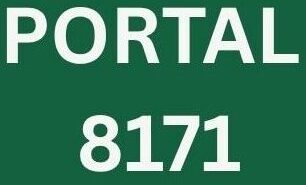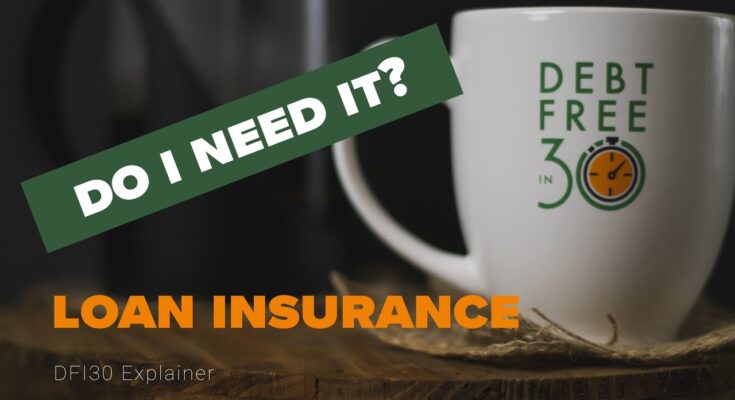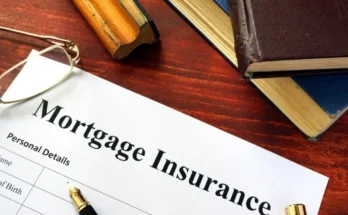Student Loan Forgiveness Programs, As of July 2025, student loan debt in the United States exceeds $1.7 trillion, affecting over 45 million borrowers. For many, the burden of monthly payments feels overwhelming, especially with rising living costs. Student loan forgiveness programs offer a potential lifeline, but navigating eligibility requirements can be daunting. This comprehensive guide explores the most prominent forgiveness programs, their eligibility criteria, and how to determine if you qualify—all optimized to help you make informed decisions about your financial future.
What Are Student Loan Forgiveness Programs?
Student loan forgiveness programs cancel part or all of a borrower’s federal student loan debt under specific conditions. These programs, primarily offered by the U.S. Department of Education, aim to support borrowers in public service roles, low-income situations, or those facing financial hardship. Forgiveness isn’t automatic; borrowers must meet strict criteria and often complete an application process.
Understanding eligibility is critical. Below, we break down the major programs, their requirements, and actionable steps to check your eligibility.
Key Student Loan Forgiveness Programs
1. Public Service Loan Forgiveness (PSLF)
Overview: The Public Service Loan Forgiveness (PSLF) program is one of the most well-known options. It forgives the remaining balance on Direct Loans for borrowers who work full-time in qualifying public service jobs and make 120 qualifying monthly payments.
Eligibility Criteria:
- Loan Type: Only Federal Direct Loans (including Direct Subsidized, Unsubsidized, PLUS, and Consolidation Loans) qualify. Private loans and Federal Family Education Loans (FFEL) are ineligible unless consolidated into a Direct Consolidation Loan.
- Employment: You must work full-time (at least 30 hours per week) for a qualifying employer, such as government organizations or 501(c)(3) nonprofits. Some other nonprofits may qualify if they provide specific public services.
- Payment Plan: Payments must be made under an income-driven repayment (IDR) plan or the 10-year Standard Repayment Plan.
- Qualifying Payments: You need 120 on-time, full payments while employed by a qualifying employer. Payments made during forbearance, deferment, or before loan consolidation don’t count.
Recent Updates (2025): The Biden administration’s 2022 PSLF overhaul continues to benefit borrowers. The Limited PSLF Waiver, which expired in October 2022, allowed previously ineligible payments to count for some borrowers. Check the Federal Student Aid (FSA) website for updates on similar temporary programs.
How to Apply:
- Submit the PSLF Employment Certification Form annually or when changing employers to track qualifying payments.
- After 120 qualifying payments, apply for forgiveness using the PSLF Application Form.
- Use the PSLF Help Tool on StudentAid.gov to verify eligibility and generate forms.
Who Should Apply?: Teachers, nurses, firefighters, government employees, and nonprofit workers are prime candidates. If you’re unsure about your employer’s status, confirm their eligibility using the PSLF Help Tool.
2. Income-Driven Repayment (IDR) Plan Forgiveness
Overview: IDR plans adjust monthly payments based on your income and family size. After 20–25 years of payments, depending on the plan, the remaining balance is forgiven. The four main IDR plans are:
- Income-Based Repayment (IBR)
- Pay As You Earn (PAYE)
- Saving on a Valuable Education (SAVE, formerly REPAYE)
- Income-Contingent Repayment (ICR)
Eligibility Criteria:
- Loan Type: Direct Loans are eligible; FFEL Loans and Perkins Loans may qualify if consolidated into a Direct Consolidation Loan.
- Income and Debt: Eligibility depends on your income relative to your debt. For example, PAYE and IBR require demonstrating financial hardship.
- Repayment Period:
- PAYE and SAVE: 20 years for undergraduate loans, 25 years for graduate loans.
- IBR: 20 years (new borrowers after July 1, 2014) or 25 years (earlier borrowers).
- ICR: 25 years.
Tax Implications: Forgiven amounts under IDR plans were taxable as income until recent legislative changes. As of 2025, forgiveness under IDR plans is tax-free through 2025 due to the American Rescue Plan Act, but check for updates as this provision may expire.
How to Apply:
- Enroll in an IDR plan via StudentAid.gov or your loan servicer.
- Recertify your income and family size annually to remain eligible.
- After the repayment period, apply for forgiveness through your loan servicer.
Who Should Apply?: Borrowers with high debt relative to income, especially those not eligible for PSLF, benefit most. The SAVE plan, introduced in 2023, offers the lowest payments and fastest forgiveness for low-income borrowers.
3. Teacher Loan Forgiveness
Overview: Designed for educators, this program offers up to $17,500 in forgiveness for teachers who work full-time for five consecutive years in low-income schools or educational service agencies.
Eligibility Criteria:
- Loan Type: Direct Loans or FFEL Loans (not private loans).
- Teaching Role: You must teach full-time in a qualifying elementary or secondary school or educational service agency serving low-income students.
- Subject Area: Teachers of math, science, or special education may qualify for the full $17,500; other teachers may receive up to $5,000.
- Service Period: Five consecutive years of teaching, though certain interruptions (e.g., military service) may not disqualify you.
How to Apply:
- Confirm your school’s eligibility using the Teacher Cancellation Low-Income Directory on StudentAid.gov.
- Complete the Teacher Loan Forgiveness Application after five years of service and submit it to your loan servicer.
Who Should Apply?: Teachers in Title I schools or those teaching high-demand subjects like math, science, or special education should explore this option. Note: You cannot receive both Teacher Loan Forgiveness and PSLF for the same service period.
4. Borrower Defense to Repayment
Overview: This program provides loan forgiveness for borrowers misled or defrauded by their school, such as through false advertising or misrepresentation of job placement rates.
Eligibility Criteria:
- Loan Type: Direct Loans; FFEL and Perkins Loans may qualify if consolidated.
- School Misconduct: You must prove your school engaged in deceptive practices, such as misrepresenting program outcomes or violating state laws.
- Application Process: Submit a Borrower Defense to Repayment application with evidence (e.g., school advertisements, enrollment agreements).
Recent Updates (2025): The Department of Education has expanded relief for borrowers from for-profit colleges like Corinthian Colleges and ITT Technical Institute. Group discharges may apply if your school is part of a class-action settlement.
How to Apply:
- File an application on StudentAid.gov, providing detailed evidence of misconduct.
- Monitor your application status, as processing times can be lengthy.
Who Should Apply?: Borrowers who attended for-profit colleges with documented misconduct, especially those closed or under investigation, should investigate this option.
5. Total and Permanent Disability (TPD) Discharge
Overview: TPD Discharge forgives loans for borrowers with a total and permanent disability that prevents gainful employment.
Eligibility Criteria:
- Loan Type: Direct Loans, FFEL Loans, and Perkins Loans.
- Disability Documentation: Provide proof of disability through:
- A physician’s certification.
- Social Security Administration (SSA) disability benefits documentation.
- Veterans Affairs (VA) determination of unemployability.
How to Apply:
- Submit a TPD Discharge application through Nelnet (the TPD servicer) or StudentAid.gov.
- Provide supporting medical or federal agency documentation.
- Monitor income for three years post-discharge to ensure continued eligibility.
Who Should Apply?: Borrowers with severe, documented disabilities should pursue this option. Be aware that discharged amounts may be taxable, though exceptions exist for certain disability-related discharges.
Other Forgiveness Options
- Perkins Loan Cancellation: For specific professions (e.g., teachers, nurses, librarians) working in high-need areas. Up to 100% of Perkins Loans may be canceled over five years.
- State-Based Programs: Some states offer forgiveness for professions like healthcare or teaching in underserved areas. Check your state’s education or workforce department for details.
- Closed School Discharge: If your school closed while you were enrolled or shortly after, you may qualify for full loan discharge.
How to Check Your Eligibility
- Verify Loan Type: Log into StudentAid.gov to confirm you have federal loans (Direct, FFEL, or Perkins). Private loans are generally ineligible.
- Review Employment: For PSLF or Teacher Loan Forgiveness, confirm your employer or school qualifies using tools on StudentAid.gov.
- Assess Income: For IDR plans, calculate your discretionary income using online calculators to estimate payments and forgiveness timelines.
- Check Program-Specific Requirements: Use the PSLF Help Tool, Teacher Cancellation Directory, or Borrower Defense resources to verify eligibility.
- Consult Your Loan Servicer: Contact your servicer for personalized guidance and application forms.
Tips for Success
- Consolidate Loans if Necessary: Consolidating FFEL or Perkins Loans into a Direct Consolidation Loan can make them eligible for PSLF or IDR forgiveness.
- Stay Organized: Track payments and employment certifications to avoid surprises.
- Monitor Policy Changes: Forgiveness programs evolve. Follow updates on StudentAid.gov or reputable news sources.
- Avoid Scams: Beware of companies promising quick forgiveness for a fee. Work directly with your loan servicer or the Department of Education.
Common Myths About Student Loan Forgiveness
- Myth: Forgiveness is automatic.
- Reality: You must apply and meet strict criteria.
- Myth: Private loans qualify for federal forgiveness.
- Reality: Only federal loans are eligible.
- Myth: Forgiveness is guaranteed after 10 years for everyone.
- Reality: Only PSLF offers forgiveness after 10 years, and only for qualifying public service workers.
Conclusion
Student loan forgiveness programs can significantly reduce your debt burden, but eligibility depends on your loan type, employment, income, and adherence to program rules. By understanding options like PSLF, IDR forgiveness, Teacher Loan Forgiveness, Borrower Defense, and TPD Discharge, you can take proactive steps toward financial relief. Start by checking your loan status on StudentAid.gov, exploring employer eligibility, and consulting your loan servicer. With diligence, you can determine if you qualify and take control of your student loan journey.




